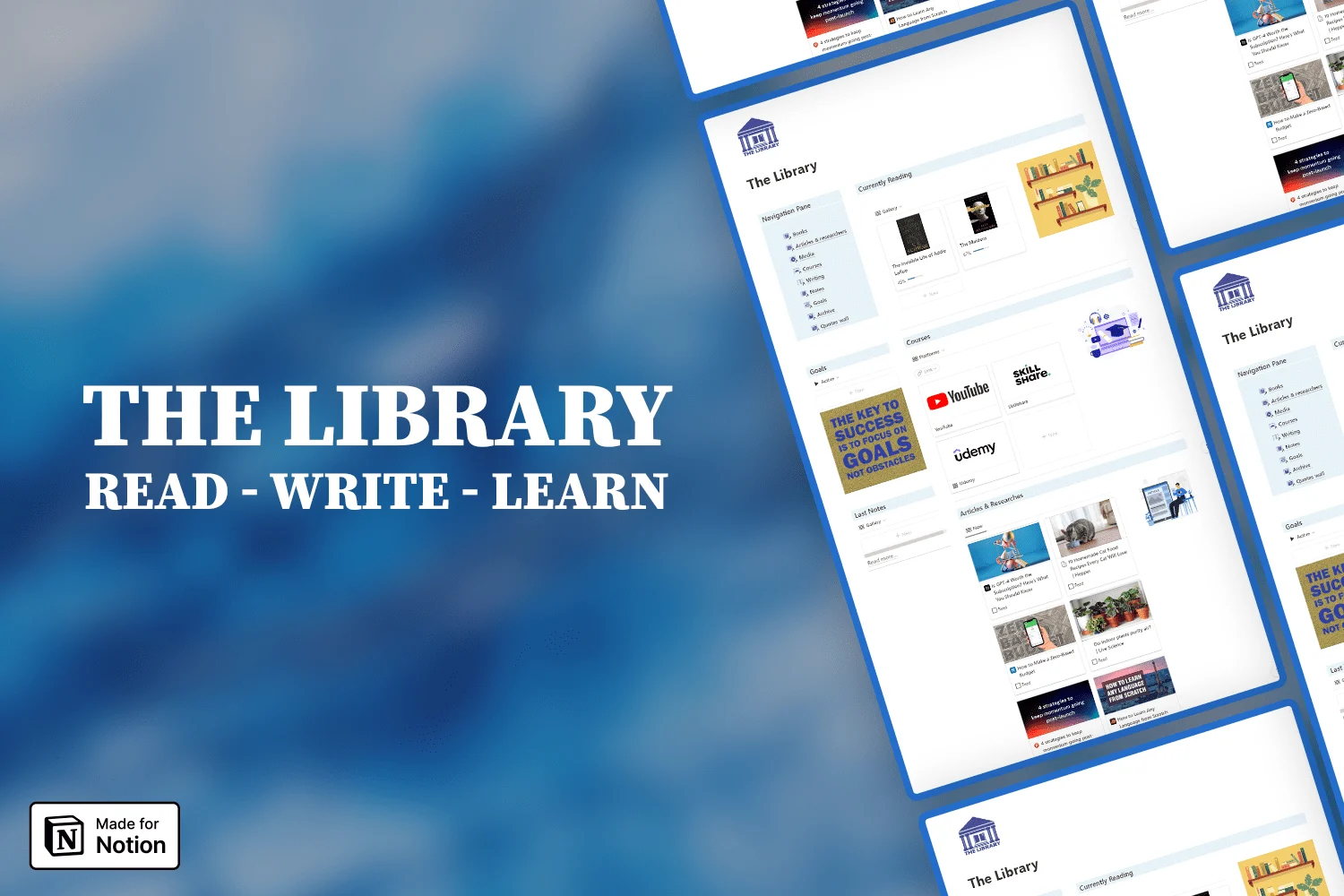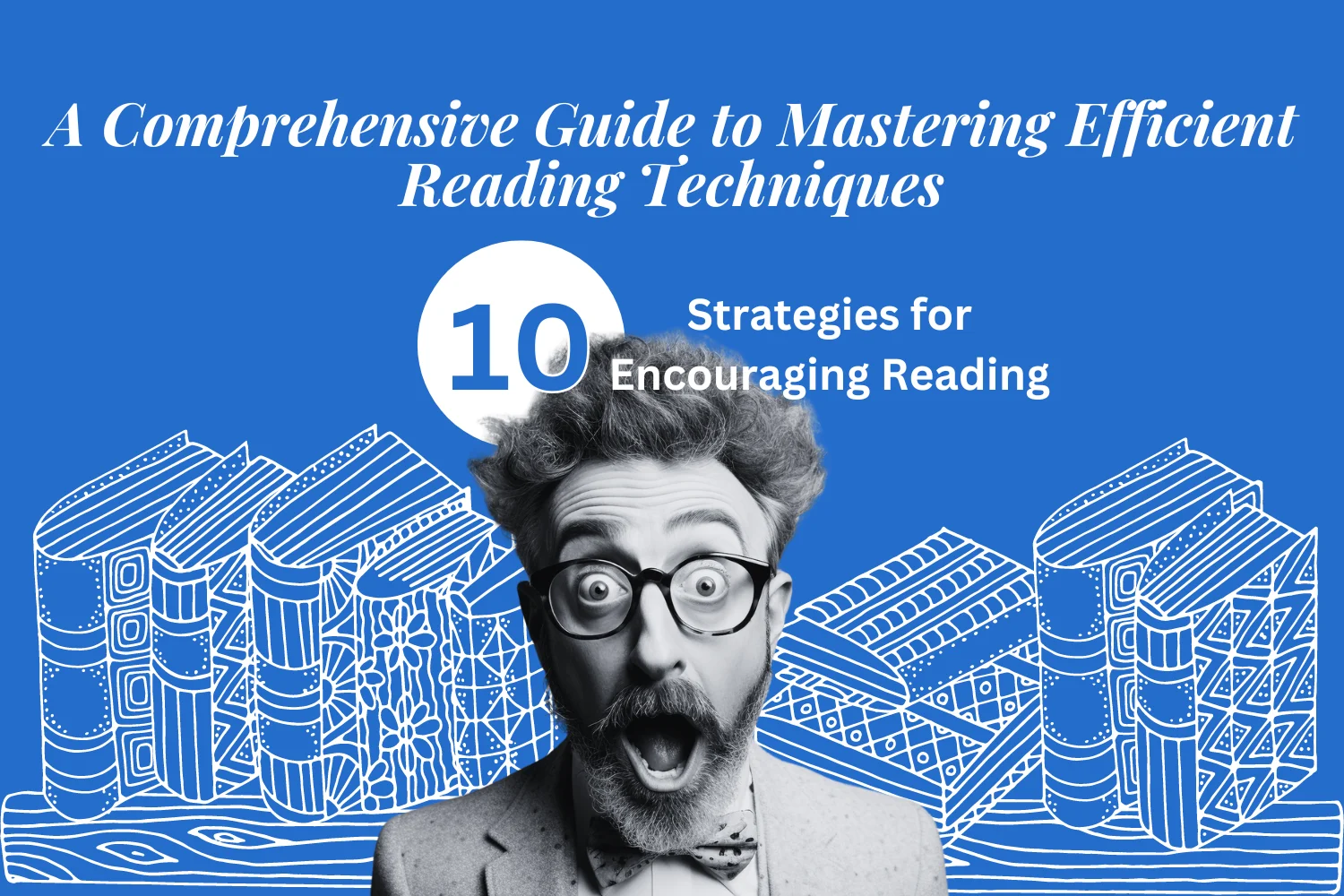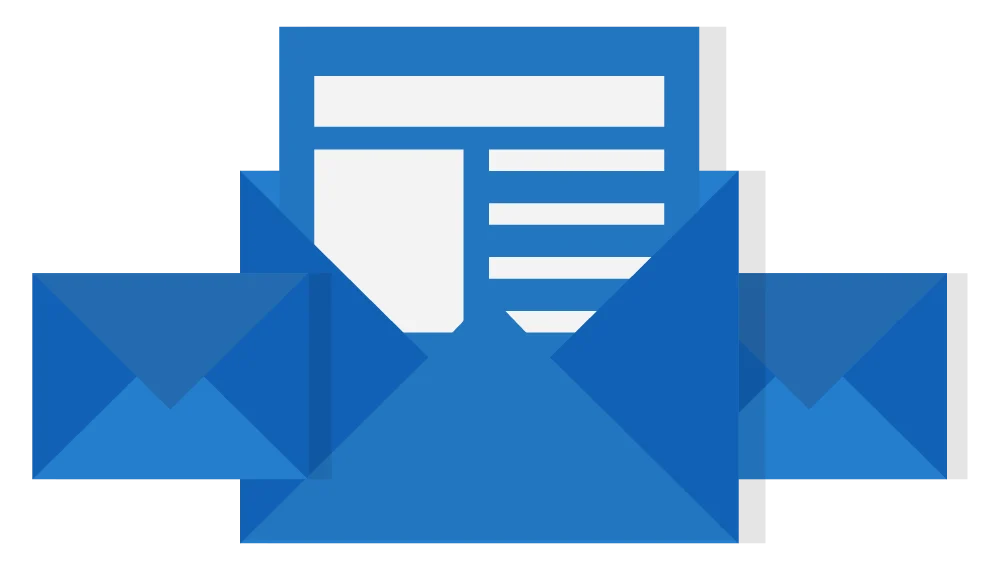Last updated on April 22nd, 2025 at 12:43 pm
In today’s information-driven world, reading is an essential skill that can make a significant difference in your life. Whether you’re a student, a professional, or simply an avid reader, the ability to process information quickly can be a game-changer. That’s where speed reading comes in.
Speed reading is not about skimming or sacrificing comprehension for the sake of speed. It’s about training your brain to process text more efficiently, enabling you to read faster without compromising understanding. In this article, we’ll explore some key tips for mastering speed reading and becoming a more efficient reader.
Tip 1: Focus on the Text Center
One common mistake among slow readers is fixating on individual words. This narrow focus can lead to a slower reading pace and hinder reading comprehension. However, speed reading techniques offer a valuable solution. By training yourself to focus on the center of the text and utilizing your peripheral vision, you can expand your reading scope. This allows you to capture not only individual words but also entire phrases and even sentences in a single glance. By broadening your reading field, you can significantly increase both your reading speed and comprehension.
Embracing speed reading techniques not only enhances your reading speed but also improves your overall reading experience. With the ability to read entire phrases or sentences at a glance, you can effortlessly navigate through texts of various lengths and complexities. This newfound efficiency enables you to absorb information more quickly and effectively, whether you’re studying for exams, conducting research, or simply enjoying a good book. By breaking free from the habit of fixating on individual words, you can unlock the power of speed reading and unlock a world of possibilities in your reading journey.

Tip 2: Use a Pointer
Have you ever noticed that your eyes naturally follow your finger when you point at something? This is because our eyes are drawn to movement and use it as a guide. You can utilize this natural inclination to your advantage while reading. By using your finger, a pen, or any straight edge as a visual guide, you can enhance your reading experience.
This simple physical movement can help you maintain a steady pace and reduce the tendency to regress or re-read sentences. When you guide your eyes along the lines of text with your finger or a pointer, you create a smoother reading flow. This can prevent distractions and keep your focus on the words you’re reading. So, the next time you pick up a book or an article, try using this technique and see how it improves your reading comprehension and focus.
Tip 3: Minimize Subvocalization
Subvocalization is a common habit in reading where individuals silently pronounce each word they read. While it is a natural part of the reading process, it can noticeably slow down reading speed. To enhance reading speed, it is recommended to consciously focus on reading faster than your inner voice can speak, thereby reducing subvocalization. With practice and continued effort, it is possible to overcome this habit and achieve significant improvements in reading speed.
Reducing subvocalization can lead to more efficient reading, allowing you to process information at a faster pace. By training yourself to read without silently pronouncing each word, you can increase the speed at which you consume written content. This technique involves focusing on the overall meaning and context of the text rather than getting caught up in pronouncing every single word. As you become more accustomed to this approach, you will notice a considerable boost in your reading speed and overall reading efficiency. So, keep practicing and be patient with yourself as you work towards minimizing subvocalization and unlocking the full potential of your reading abilities.
Tip 4: Practice Regularly
Like any skill, speed reading improves with practice. Dedicate specific time each day to practice speed reading. Start with shorter texts and gradually work your way up to longer and more complex materials. Consistency is key to developing and maintaining your speed reading abilities.
To make the most of your speed reading practice, it’s important to establish a routine that suits your schedule and learning style. Find a quiet and comfortable space where you can focus without distractions. Set aside dedicated time each day, even if it’s just 10 minutes, to immerse yourself in speed reading exercises. Begin with shorter texts, such as articles or blog posts, and gradually increase the length and complexity of the material as you progress.
During your practice sessions, remember to stay relaxed and maintain a steady pace. Avoid rushing through the text, as it can hinder comprehension. Instead, focus on finding a balance between speed and understanding. As you become more comfortable with the techniques and gain confidence in your reading abilities, challenge yourself with more challenging texts, such as academic papers or books.
Consistency is key in developing and maintaining your speed reading skills. Make speed reading a part of your daily routine and stick to it. Over time, you’ll notice significant improvements in your reading speed, comprehension, and overall efficiency. So, commit yourself to regular practice, and you’ll unlock the full potential of speed reading in no time.
Speed reading is not just about reading quickly; it’s about reading smarter and more efficiently. By incorporating these tips into your practice and embracing a growth mindset, you’ll be well on your way to becoming a proficient speed reader and reaping the benefits in various aspects of your life.
Tip 5: Expand Your Peripheral Vision
Speed readers have a distinct advantage with their broader field of vision, enabling them to capture more words in a single glance. To cultivate this skill, it is beneficial to practice expanding your peripheral vision while reading. By consciously widening your focus and training your eyes to take in more words at once, you can enhance your reading speed and efficiency. Initially, it may require deliberate effort, but with consistent practice, this technique will become more natural and effortless. As your peripheral vision improves, you will notice a significant boost in your reading speed, allowing you to process information more rapidly and effectively.
Developing a broader field of vision is a key aspect of speed reading. It allows you to take in more words and phrases at a glance, reducing the need for your eyes to scan the text word by word. By widening your focus, you can train your eyes to capture chunks of text, facilitating faster reading and increasing your overall reading speed. Over time, this expanded peripheral vision will become second nature, enabling you to read with greater ease and efficiency.
Tip 6: Prioritize Important Content
Not all parts of a text are equally important when it comes to reading efficiently. By learning to identify the key points, main ideas, and supporting details, you can optimize your reading experience. By focusing on the crucial content, you can allocate less time to the less important sections, which can significantly enhance your reading speed.
When you prioritize the essential aspects of a text, you allow yourself to extract the most valuable information quickly and effectively. By honing your ability to discern the key points and main ideas, you can navigate through the material with greater speed and efficiency. This enables you to grasp the core concepts and arguments presented in the text, while spending less time on less significant details. By adopting this approach, you can streamline your reading process and make the most of your time and effort.
Developing the skill of identifying the crucial content requires practice and active engagement with the text. As you become more proficient, you will notice a remarkable improvement in your reading speed and overall comprehension. So, embrace the art of prioritization in your reading journey and unlock the true potential of efficient reading.
Tip 7: Eliminate Distractions
Creating the right reading environment is not only about finding physical tranquility but also about cultivating a mental state conducive to deep engagement with the text. When you are free from distractions, your mind can fully absorb the information and ideas presented in the material. This heightened concentration enables you to delve into the text’s nuances, understand complex concepts, and make meaningful connections. By establishing a serene reading atmosphere and prioritizing uninterrupted focus, you can maximize your reading potential and extract the most value from your reading experience.

Concentration is the key to unlocking the power of reading. So, find a quiet space, free yourself from distractions, and embark on your reading journey with a clear and focused mind. You’ll be amazed at how much more you can absorb and learn when you give your undivided attention to the text.
Tip 8: Group Words into Meaningful Chunks
Instead of reading word by word, you can enhance your reading speed and comprehension by grouping words into meaningful chunks. Your brain is naturally skilled at recognizing patterns, so take advantage of this ability. Look for phrases or groups of words that convey a complete thought, and read them together. By adopting this technique, you can process information more efficiently and gain a comprehensive understanding of the text.
Grouping words into meaningful chunks is a powerful strategy to optimize your reading experience. It allows you to move beyond the limitations of reading word by word and instead focus on capturing the essence of the text. As you train yourself to identify and read these meaningful chunks, you’ll notice a significant improvement in your reading speed and overall comprehension. This technique enables you to grasp the interconnected ideas and concepts presented in the text, leading to a deeper understanding of the material.
By consciously applying this approach, you can transform your reading experience into a more fluid and dynamic process. As you become more proficient in recognizing meaningful chunks, you’ll be able to navigate through texts with greater ease and efficiency. This method not only enhances your reading speed but also improves your ability to extract key information and make connections between ideas. So, embrace the power of grouping words into meaningful chunks, and unlock your full potential as a reader.
Tip 9: Avoid Regression
Regression, the habit of going back to re-read what you’ve already read, is a common reading behavior that slows you down. It can disrupt the flow of your reading and hinder your overall speed and efficiency. To overcome this habit, it’s important to train yourself to trust your initial reading and resist the urge to go back. Instead, trust that you’ve captured the essential information and continue reading forward. By doing so, you can maintain a steady reading pace and improve your overall speed.
By resisting the temptation to regress, you allow yourself to move forward and progress through the text without unnecessary interruptions. Trusting your initial reading helps you build confidence in your comprehension abilities and enables you to stay focused on the content at hand. It’s important to understand that going back and re-reading can disrupt the natural rhythm of reading and impede your reading speed. By training yourself to resist regression, you can develop a more efficient reading habit and achieve greater speed and productivity in your reading endeavors.
Reading is a dynamic and continuous process. Embrace the mindset of moving forward and trust in your ability to capture the necessary information in one pass. By breaking free from the habit of regression, you can maintain a smooth reading flow, enhance your reading speed, and maximize your overall reading experience.
Tip 10: Maintain a Comfortable Pace
While speed reading aims to increase your reading speed, it’s important to strike a balance and maintain a comfortable pace. Rushing through text can have negative consequences, such as decreased comprehension and retention. It’s crucial to find a speed that allows you to understand and absorb the material effectively. As you continue to practice speed reading, you’ll naturally discover your optimal reading pace.
By maintaining a comfortable pace, you give yourself the opportunity to fully engage with the text and comprehend its content. Speed reading is not just about reading as fast as possible; it’s about finding a balance between speed and comprehension. When you rush through the material, you may miss important details or fail to grasp the overall meaning. On the other hand, reading too slowly can impede your progress and hinder your ability to process information efficiently.
To find your optimal reading pace, it’s helpful to experiment with different speeds during your practice sessions. Pay attention to your level of comprehension and adjust your speed accordingly.
Unlock More Speed Reading Tips
These ten tips provide a solid foundation for improving your reading speed and efficiency. However, there’s so much more to explore when it comes to speed reading. Inside our comprehensive guide to mastering speed reading, you’ll discover additional strategies, exercises, and techniques to take your reading skills to the next level.
In this guide, we delve deeper into topics such as comprehension, retention, and the application of speed reading in various contexts, from textbooks to novels. You’ll find expert guidance, additional exercises, and valuable insights to help you unlock your full reading potential.
Reading is not just about consuming words; it’s about gaining knowledge, expanding your horizons, and fueling your imagination. With speed reading, you can accomplish all of this more efficiently. Start your journey to becoming a master reader today and unlock a world of possibilities!

Master Your Speed Reading skills
Discover a 6-Month Reading Adventure: Unleash Your Passion, Boost Speed, and Master In-Depth Analysis. Includes Goal Tracking, Speed Reading Techniques, and Comprehensive Book Analysis.
Frequently Asked Questions
The fastest reading skill is often referred to as “skimming” or “scanning.” Skimming involves quickly glancing over the text to get a general idea of its content, while scanning involves searching for specific keywords or information within a text. These techniques are useful for quickly identifying relevant information without reading every word or sentence in detail. However, it is important to note that skimming and scanning may sacrifice some level of comprehension compared to a more thorough reading approach.
The time it takes to learn to read faster can vary depending on the individual and the amount of time dedicated to practice. With consistent practice and effort, noticeable improvements in reading speed can be achieved within a few weeks to a few months. However, it is important to note that becoming a proficient speed reader is an ongoing process that requires continuous practice and refinement.
To read and memorize fast, you can try the following strategies:
Use active reading techniques, such as highlighting or underlining key information.
Take notes while reading to summarize important points.
Create visual associations or mnemonic devices to aid in memory retention.
Review and reinforce the information through regular practice and repetition.
Break down complex information into smaller, digestible chunks.
Use visualization techniques to create mental images of the material.
Practice retrieval exercises, such as recalling information without referring back to the text.
Make connections between new information and existing knowledge.
To train yourself to read faster, you can try the following techniques:
Practice speed reading exercises regularly.
Focus on the center of the text and use your peripheral vision to capture more words at once.
Minimize subvocalization by reading faster than your inner voice can speak.
Use a pointer, such as your finger or a pen, to guide your eyes along the lines of text.
Expand your peripheral vision by consciously widening your focus while reading.
Prioritize important content and identify key points and main ideas.
Eliminate distractions by creating a quiet and comfortable reading environment.
Group words into meaningful chunks to process information more efficiently.
Avoid regression and trust your initial reading.
Maintain a comfortable pace that allows for both speed and comprehension.


